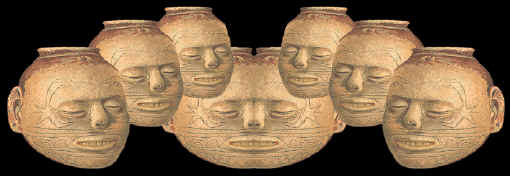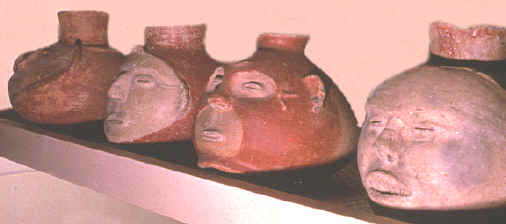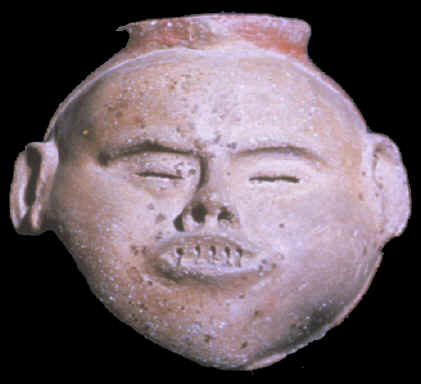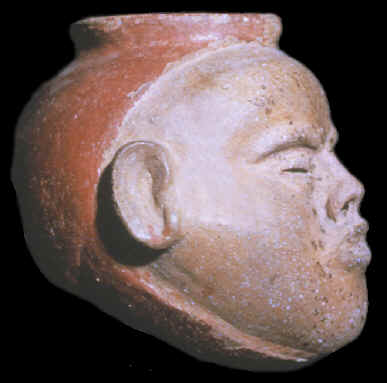|
||
|
||
|
" Considered a pinnacle in the ceramic
artistry of the Mississippian Culture is the effigy of the human head,".---1976,
Roy Hathcock, "Ancient Indian Pottery of the Mississippi River
Valley," p. 2.
These painted "head pots" are colored with two pigments. The red pigment was made from powered iron ore (hematite) and the white pigments were made from either lead ore (galena) or kaolin, a white clay that is applied as a slip or wash.
The most dramatic sculpted clay images made by Late Mississippian potters are the death's head effigy ceramic vessels. These "head pots" were sculpted in the image of a three-dimensional human head and placed into graves as offerings to the dead. They were made during the Late Mississippian period sometime between A.D. 1200 and 1500. Although rare, the largest number of them have been found in northeastern Arkansas and southeastern Missouri. |
||
|
||
|
Late Mississippian craftsmen produced ritual objects in prolific numbers. One of their most impressive artistic achievements are the human head effigies sculpted in clay. Even though a large percentage of their ritual items would have been made by men. The "head pots" were most probably made by women potters. There is some evidence that several of the "head pots" on some sites were made by the same person. These skilled craftsmen were probably in demand for these types of special items and may have bartered their products for trade. |
||
|
||
|
Several names have been used for these clay human head effigies. They have been called, death head effigies, death's head vases, death masks, head vases, head vessels, head bottles, head jars and head pots. "Head pot" is the term that is often used to describe them but the written text uses a wide range of titles. |
||
| CONTINUE ON TO PAGE TWO | ||
|
"REFERENCES"
1903,
Holmes, W. H., "Aboriginal Pottery of the Eastern United
States," "20th Annual Report, Bureau of American
Ethnology," pp. 96-98. |
||




